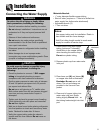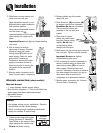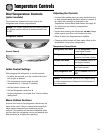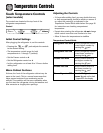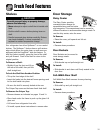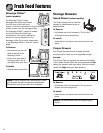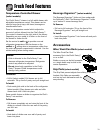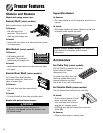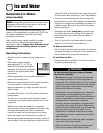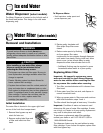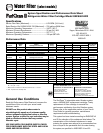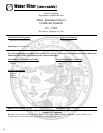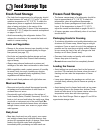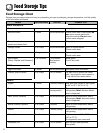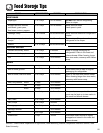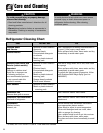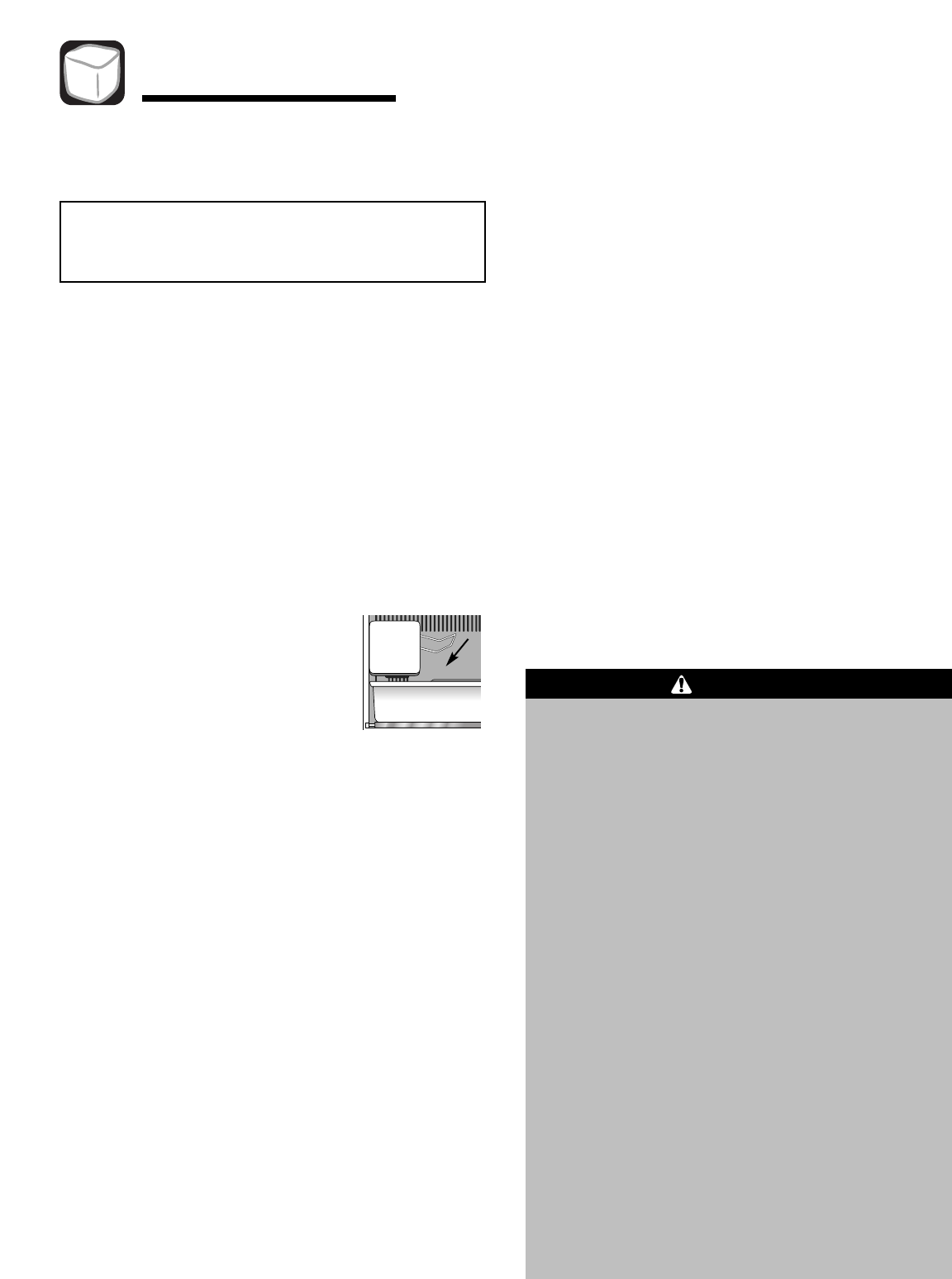
Ice and Water
16
Automatic Ice Maker
(select models)
Note: Energy rating guides that are posted on the
refrigerator at the time of purchase do not include
optional ice maker energy usage.
To avoid personal injury or property damage,
observe the following:
• Do not place fingers or hands on the automatic
ice making mechanism while the refrigerator is
plugged in. This will help protect you from possible
injury. It will also prevent interference with moving
parts of the ejector mechanism and the heating
element that releases the cubes.
• Under certain rare circumstances, ice cubes may
be discolored, usually appearing with a green-
bluish hue. The cause of this unusual discoloration
can be a combination of factors such as certain
characteristics of local waters, household
plumbing and the accumulation of copper salts in
an inactive water supply line which feeds the ice
maker. Continued consumption of such discolored
ice cubes may be injurious to health. If such
discoloration is observed, discard the ice cubes
and contact your dealer to purchase and install a
water line filter.
• Water damage due to improper water connection
may cause mold/mildew growth.
• Clean up water and ice spills to avoid personal
injury and to prevent mold/mildew growth.
WARNING
Some models are automatic ice maker ready. The
number of the appropriate ice maker kit is IC11B. The
kit contains installation instructions and water
connection instructions.
Other models have a factory installed ice maker.
Connect the ice maker to the water supply as
instructed on page 9.
Proper water flow and a level
refrigerator are essential for optimal ice maker
performance.
Operating Instructions
• Confirm ice bin is in place and ice maker arm is
down.
• After freezer section reaches
approximately 0° F (-18° C), ice
maker fills with water and begins
operating. You will have a complete
harvest of ice approximately every
three hours.
• Allow approximately 24 hours after installation to
receive first harvest of ice.
• Discard ice created within first 12 hours of operation
to assure system is flushed of impurities.
• Stop ice production by raising ice maker arm until
click is heard.
• Ice maker will remain in the off position until arm is
pushed down.
• The first one or two batches will probably contain
undersized and irregular cubes because of air in the
supply line.
• When the ice cubes are ejected it is normal for
several cubes to be joined together at the ends. They
can easily be broken apart. The ice maker will
continue to make ice until the supply of ice cubes
raises the sensor arm, shutting the ice maker off.
• Certain sounds may accompany the various cycles of
the ice maker. The motor may have a slight hum, the
cubes will rattle as they fall into an empty storage bin
and the water valve may click or “buzz” occasionally.
• If the ice is not used frequently, the ice cubes will
become cloudy, shrink, stick together and taste stale.
Empty the ice storage bin periodically and wash it in
lukewarm water. Be sure to dry the bin thoroughly
before replacing it.
• Beverages and foods
should not be placed in the
ice storage bin for quick chilling. These items can
block the sensor arm, causing the ice maker to
malfunction.
• Turn off (arm up) the ice maker when the water
supply is to be shut off for several hours.
To Remove the Ice Bin:
• Pull it forward, away from the ice maker. To avoid the
ice maker dumping ice while the bin is removed, turn
the ice maker off by raising the sensor arm.
To Install the Ice Bin:
• Reverse the above procedure. Turn the ice maker on
by lowering the sensor arm.



